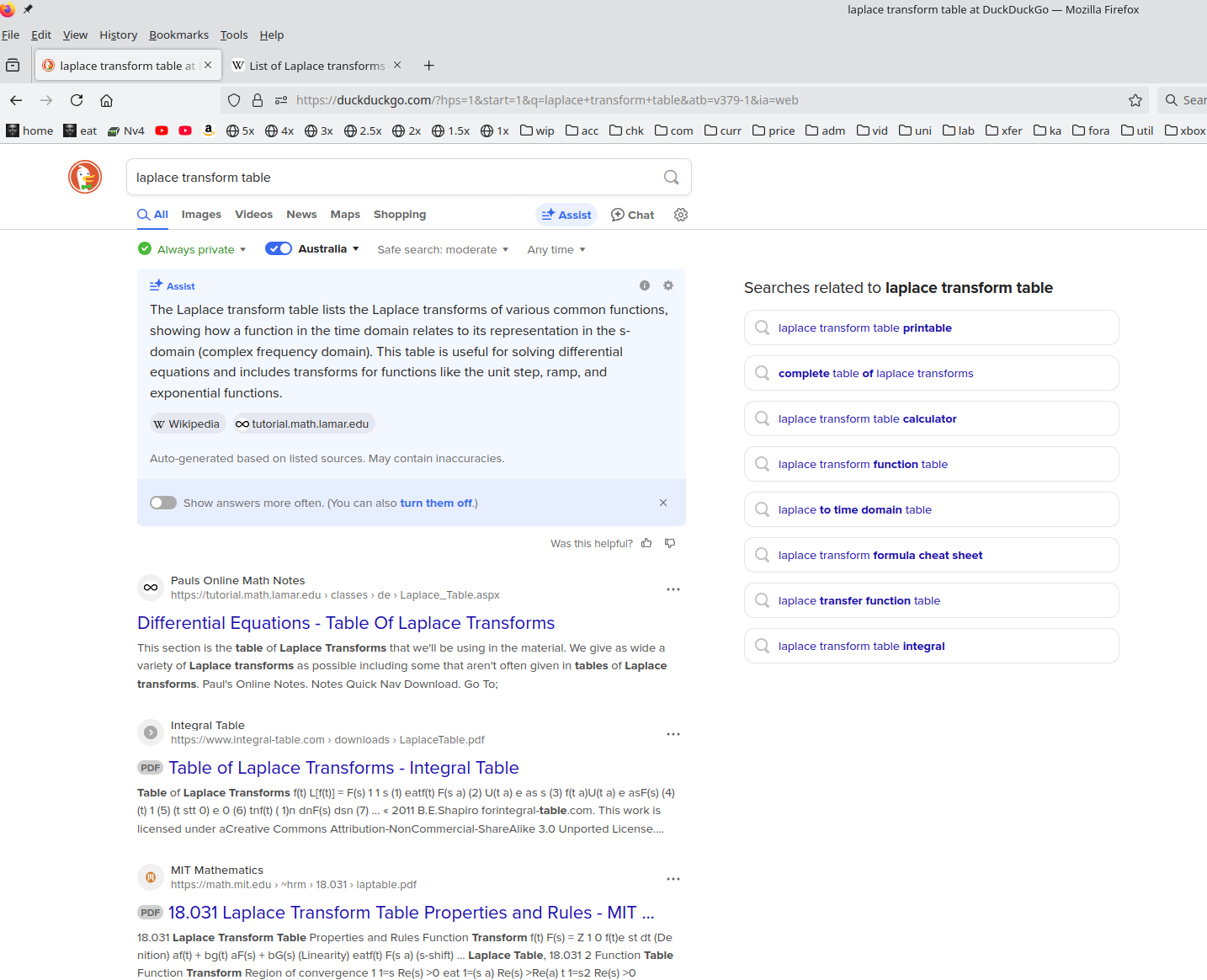I enjoyed this article linked by Al Williams over on Hackaday: Understanding Linear Regression.
Category Archives: Mathematics
The Dirac Equation: The Most Important Equation You’ve Never Heard Of
It is my ambition, one day, to understand all the math in this: The Dirac Equation: The Most Important Equation You’ve Never Heard Of.
5 Methods for Differential Equations
This was interesting: Physics Students Need to Know These 5 Methods for Differential Equations. It mentioned List of Laplace transforms. Also it looks like duckduckgo has a new “Assist” feature!
How Math Becomes Difficult
This is a really great overview of a pretty big chunk of mathematics: How Math Becomes Difficult
Mail Call #20: GreatFET One, Cynthion, Mesh Holder, USB Cable, Calculus, KVM and More! | In The Lab
This post is part of my video blog and you can find more information about this video over here.
You can support this channel on Patreon: patreon.com/JohnElliotV
In this video we take a look at what has arrived in the mail from AliExpress, eBay, and Amazon.
- Hannord USB3.2 10Gbps Cable USB A to Type-C 3.2 Data Transfer USB C SSD Hard Disk Cable 3A 60W Quick Charge 3.0 Charge Cable
- Advanced Calculus (as mentioned by my mate Learning as a hobby, see also Nicolas Bourbaki)
- KVM Switch 8 Ports, HDMI 2.0 KVM Switcher and USB 2.0 Hub Support 4K@30Hz for 8 PC Share Keyboard, Mouse and Monitor Compatible with Windows/Linux/Mac System etc
- Great Scott Gadgets GreatFET One Bundle – Hi-Speed USB Peripheral, Logic Analyzer, Debugger and Development Board. Open Hardware. Includes GreatFET One, Wiggler, Cable & 120 Prototyping Wires
See here for more info about the Great Scott Gadgets:
In this video I mention my mate @learningasahobby790 who makes interesting videos about mathematics and philosophy, check him out.
Thanks very much for watching! And please remember to hit like and subscribe! :)
Following is a product I use picked at random from my collection which may appear in my videos. Clicking through on this to find and click on the green affiliate links before purchasing from eBay or AliExpress is a great way to support the channel at no cost to you. Thanks!
Yum Cha 11 in 1 USB-C Hub USB Hub |
Let’s go shopping!
Learning the Art of Electronics: A Hands-On Lab Course 2ed
I have been sad for some time that Learning the Art of Electronics: A Hands-On Lab Course is out of print. Little did I know, they have been working on a second edition! The revised edition is due out in March 2025. Excellent news! I don’t usually pre-order books, but I will pre-order my copy of Learning the Art of Electronics: A Hands-On Lab Course 2ed. There’s more info on the book’s website: learningtheartofelectronics.com.
New Book Teardown #6: God Created the Integers (2005) | Learning Electronics In The Lab With Jay Jay
This post is part of my video blog and you can find more information about this video over here.
You can support this channel on Patreon: patreon.com/JohnElliotV
In this video I take a look at God Created the Integers edited by Stephen Hawking and published in 2005.
Hawking’s other book which I mention in this video is On The Shoulders Of Giants.
I am sorry that my pronunciation of European names is kind of terrible. While working through the book I made some notes on my wiki about pronouncing various names: God Created the Integers.
At 12 hours (the YouTube maximum video length) this is my longest video so far! If you do watch the whole thing through to the end, you are my type of person, so please do let me know! :)
Thanks very much for watching! And please remember to hit like and subscribe! :)
Following is a product I use picked at random from my collection which may appear in my videos. Clicking through on this to find and click on the green affiliate links before purchasing from eBay or AliExpress is a great way to support the channel at no cost to you. Thanks!
Yum Cha 16MP USB Camera |
Let’s go shopping!
Stuff Made Here
Today I discovered a new YouTube channel Stuff Made Here. They had this fun video: What if we made a camera that sees in reverse?
What is elliptic curve cryptography?
The following quotation is taken from Elliptic Curve Cryptography for Developers.
What is elliptic curve cryptography?
First, there are no ellipses. Second, there are no curves. So why is it called an “elliptic curve”? The primary reason is history. Performing integrals of the elliptical orbits of planets gave rise to formulas labeled elliptic curves. These formulas were then used in other areas of mathematics, and the label stuck.
The areas of mathematics used in public key cryptography involve number theory (the properties of integers), combinatorics (the study of counting), and finite fields (sets with finite objects and specific rules). Elliptic curves are used in just about every area of mathematics. This makes studying elliptic curve math very difficult because it is hard to determine what you really need to know and what is just really interesting.
For example, elliptic curves have been used for factoring numbers and solving Fermat’s Last Theorem. In chapter 3, I explain how elliptic curves on the complex plane are used to understand elliptic curves over finite fields. It’s all interesting but not necessarily applicable to cryptography.
Maxwell’s equations
An interesting video from Ali the Dazzling: You don’t understand Maxwell’s equations.

